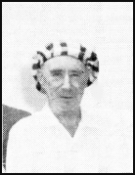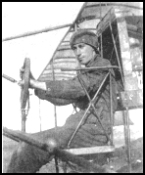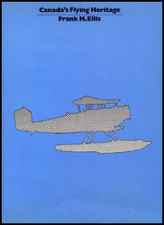
-1979 |
 |
|
Pittsburgh, PA EB Chirp |
 |
 |
first successful airplane built in Alberta, Canada. |
a Burgess-Wright hydroplane first waterborne aircraft to fly in Canada. |
|
He mentions our own "Fritz" Ericson and the manufacture of "Canucks" (Curtiss JNs) in his yarn. And then publishes illustrations of scale models of the first six airplanes in Canada's history---the Red Wing, flown by "Casey" Baldwin at Lake Keuka, 1908; McCurdy's Silver Dart of 1909, the first airplane to be flown in Canada; a tractor biplane designed, built and flown in Vancouver (1910-11) by William Templeton, William McMullen and Winston Templeton; a Curtiss pusher purchased by EB William Stark, of Vancouver, and flow by him 1912-15; the two-seater, dual-controlled pusher biplane designed, built and flown by William A. Straith in Winnipeg prior to the last war and a single-seater Curtiss-type pusher contstructed and flown by EB Author Frank H. Ellis and Thomas G. Blakely in Calgary, Alverta, 1914-15. Here is the full tale of every Early Bird who ever flew in British Columbia (1910-1914--- Charles K. Hamilton (with his Aerial Clipper), J. C. Mars (with his airship), ALys McKey, William Stark, John M. Bryant, William McMullen, William Templeton, Winston Templeton, C. F. Walsh, P. O. Parmalee, Clifford Turpin, James V. Martin, Glenn L. Martin and Weldon B. Cooke. With this start, one presumes he can depend on Author Ellis to complete the history of the pioneers of Canadian aeronautics. After that, there's the United States to be covered. Authors, arise! courtesy of Steve Remington - CollectAir |
|
From The Early Birds of Aviation CHIRP, January, 1960, Number 62 |
|
|
by Frank H. Ellis University of Toronto Press 1980. You can review his book by clicking on: Frank H. Ellis |
 |
CANADA'S FLYING HERITAGE by Frank Ellis Product Details Paperback: 398 pages; 10.9 x 8 x 0.9 inches Publisher: University of Toronto Press; [2d ed.] edition (June 1, 1980) List Price: $21.29 Used Price: $4.37 ISBN-10: 0802064175 ISBN-13: 978-0802064172 |
|
Description: This book not only records the significant events of Canadian aviation but also pays tribute to the 'forgotten flyers who flew by guess and by God or with calculating caution - for the sheer love of flying - in the early days.' 'Pioneers of the Air' recounts the first tentative experiments with that overgrown monster, the flying machine - at this stage, the glider. Next come the Barnstormers, the first professional airmen, trying desperately to wrest a living from the air, pioneering in the field of practical flying as little more than vaudeville performers. These were the days of daring aero-acrobatics and tense and crowded air-meets. The First World War saw a tremendous advance in technical manoeuvres and in pilot skill; the first aviation school was established in Toronto, where the War Birds learned to fly. An unparallelled boom in aviation followed the war. Public interest had been aroused by the celebrated achievement of Canada's Air Force, and many young men, the restlessness of the war still in them, were obsessed by the itch to fly again. The Dollar-a-Minute days marked the beginning of passenger travel and a steady increase in experimental flying, to bear its practical fruit in days to come. The next chapter is one of heroic enterprise - the conquest of the Atlantic and the spanning of the Continent. No less epic is the history of the bush pilots who tamed the Canadian North. We must be grateful to Mr. Ellis for rescuing from obscurity this important chapter in our history. |
|
From The Early Birds of Aviation Roster of Members, 1996 |
|
If you have any more information on this Early Bird, please contact me. E-mail to Ralph Cooper Back 

|